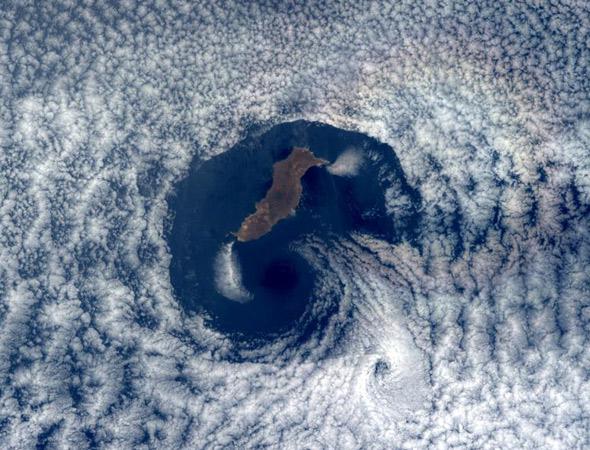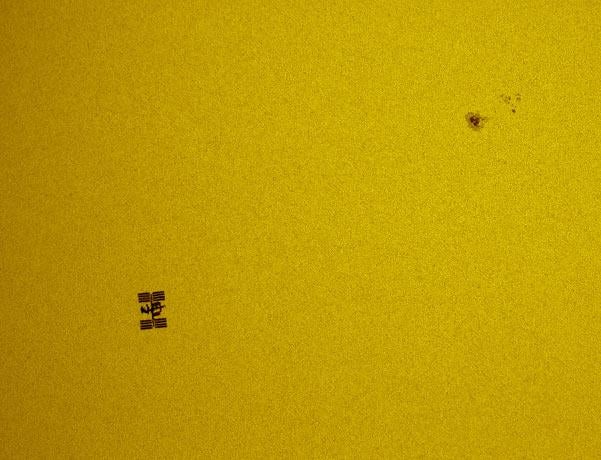You just never know what you’ll see when you take a picture of the Earth from space. German astronaut Alex Gerst must’ve been pretty surprised when he looked out the space station window and saw a 35-kilometer-long seahorse blowing a rainbow bubble!

Photo by NASA
That image was taken on June 21, 2014, and—not to burst your bubble—actually shows the island of Guadalupe, located about 240 kilometers off the coast of Baja California. It’s essentially two volcanoes that overlap in the north/south direction, and has ridges running along it that reach a maximum height of about 1,300 meters (0.8 miles).
In the photo (which is part of a series Gerst took), north is toward the upper right. The winds tend to blow from the west (upper left), and you can see the webbed pattern of (what I think are) stratocumulus undulatus clouds around the island. Guadalupe’s elevation splits the wind, which flows around the island, disrupting the stratus formation near it. That’s why there’s a clear spot around the island.
I suspect the clouds to the east (lower right) are flowing back toward the island due to eddies in the winds as they move around the island. You can also see a small vortex a little farther to the east, which can sometimes form in such situations. Sometimes long streamers of vortices appear downwind from such islands; these are called von Kármán vortices, and I’ve written about them many, many, many times. They’re extremely cool.
But what about that rainbow effect? What’s that?
That’s what’s called a glory. It’s an optical effect where light from the Sun gets refracted (bent) back toward the observer. To see one, you need to have the Sun directly behind you (so in a sense you’re looking down into your own shadow), and there has to be water droplets suspended in the air to bend the sunlight. As far as I can find, the exact physics going on is not terribly well understood (as opposed to what happens in actual rainbows, which is quite well known).
I see them every now and again when I fly in airplanes; I got video of one on a recent trip home from Texas:
The engine noise was loud, so I posted a transcript.
Since there’s a glory in the picture of Guadalupe Island taken by Gerst, we know the Sun must have been directly behind him as he looked down at the island. Another picture he took within minutes of the other shows the glory in a different spot. If you connect the two points, they go right over the north part of the island (the “seahorse head”). Anyone standing there and looking up would’ve been able to see the space station pass directly in front of the Sun! That would’ve made for a pretty dramatic picture itself. And what would that have looked like? Why, this:

Photo by Thierry Legault, used by permission
That was taken by Thierry Legault in 2010, and shows the ISS in transit across the Sun.
I would love to see a pair of photos like these taken at the same time: A glory shining around some spot on the Earth, and at its center a photographer looking up to capture the station in front of the Sun. Of course, the presence of a glory means the sky would be cloudy for the photographer, but if the clouds were thin stratus, you’d see the Sun right through them. It’s possible.
Someone get on that, OK?
Tip o’ the lens cap to Peter Caltner for finding the photos in the NASA database, and of course to Alex Gerst for taking them.